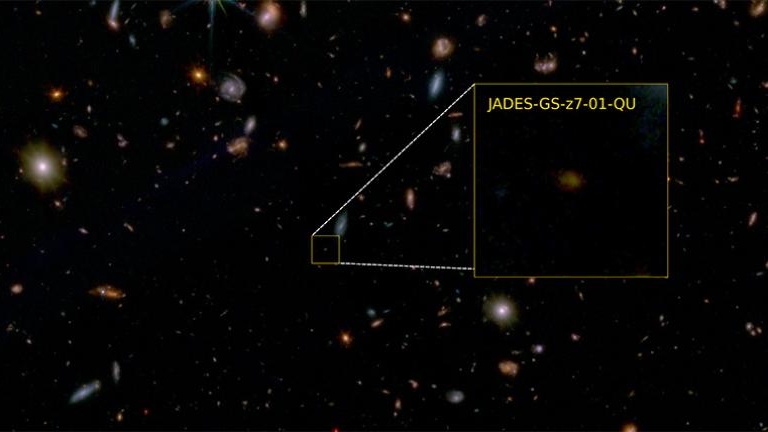
Astronomers have discovered the oldest known "dead" galaxy in recent observations from the James Webb Space Telescope (JWST). This galaxy appears to challenge current models of the early universe.
The newly discovered galaxy, named JADES-GS-z7-01-QU, stopped forming stars more than 13 billion years ago, when the universe was only 700 million years old. However, astronomers are puzzled by the galaxy's sudden halt in star formation because, at that time, the dust and gas necessary to form stars was abundant in the universe.
"The first few hundred million years of the universe was a very active phase, with lots of gas clouds collapsing to form new stars," Tobias Looser, lead author of the study from the University of Cambridge, said in a statement. "Galaxies need a rich supply of gas to form new stars, and the early universe was like an all-you-can-eat buffet."
Data from the JWST Advanced Deep Survey (JADES) shows that the galaxy most likely had a quick burst of star formation that lasted between 30 million to 90 million years, and then stopped suddenly between 10 million and 20 million years before the point in time observed by the JWST, according to the statement.
Dead galaxies — those that no longer form stars — have been observed in the early universe before, But JADES-GS-z7-01-QU is the oldest such galaxy yet recorded at only 700 million years after the Big Bang that formed the universe 13.8 billion years ago. It is also much smaller than other dormant galaxies previously observed in the early universe — a benefit of the JWST's improved sensitivity that can detect smaller and fainter galaxies.
"Until now, to understand the early universe, we've used models based on the modern universe," Roberto Maiolino, co-author of the study from the University of Cambridge, said in the statement. "But now that we can see so much further back in time, and observe that the star formation was quenched so rapidly in this galaxy, models based on the modern universe may need to be revisited."
The recent observations of JADES-GS-z7-01-QU are the deepest views into the distant universe made to date by the JWST. The rapid burst of star formation observed in the galaxy may have exhausted the galaxy's reservoir of dust and gas from which new stars are formed.
"Everything seems to happen faster and more dramatically in the early universe, and that might include galaxies moving from a star-forming phase to dormant or quenched," Looser said in the statement.
Given astronomers are still unsure why exactly the galaxy's star formation stopped — or if the galaxy ever came back to life — they plan to find a greater number of old galaxies to help piece together galactic evolution in the early universe and create more accurate models of that time period.
Their findings were published March 6 in the journal Nature.







